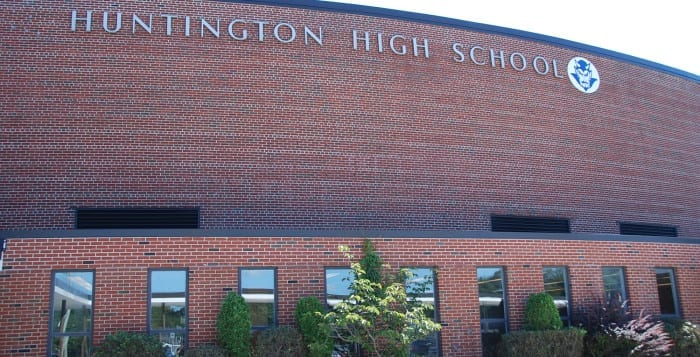Suffolk police, schools reach agreement on SRO’s job description
Exactly two months after a New York Times Magazine article about the deportation of a Honduran immigrant rocked the Huntington school community, Suffolk County Police Department and Suffolk County school superintendents have agreed on a job description for school resource officers.
Kenneth Bossert, president of Suffolk County Schools Superintendents Association, said his organization has been diligently working hand-in-hand with Suffolk police to craft the one-page document that sets out a 19-point bullet list outlining the roles and responsibilities of every school resource officer shared with TBR News Media Feb. 26.
“This document is intended to specify what these roles and responsibilities have been and is in no way intended to modify this existing program, which has achieved much success since it was established decades ago,” read a joint statement issues by Suffolk police and the superintendents association.
Suffolk’s SRO program was established in 1998, but there has never previously been a formal written document outlining the responsibilities of an SRO, according to Bossert. The issue has become a matter of pressing local concern after ProPublica reporter Hannah Dreier wrote in her Dec. 27 article that Huntington’s SRO officer Drew Fiorello was allegedly involved in providing evidence resulting in the deportation of Alex, a Huntington High School student accused of being involved with MS-13.
“[An MOU] is different from a list of roles and responsibilities, it has a legal seriousness to it different from those.”
-Josh Dubnau
“For years, I believed the [school resource officer] was placed there to protect us,” 2016 graduate Savannah Richardson said at Jan. 9 board of education meeting. “I was never aware information shared with the SRO would end up in the hands of ICE.”
At the top of new one-page policy document outlining of an SRO’s responsibilities is, “perform all duties, responsibilities, and lawful requirements of a duly sworn Suffolk County Police Officer.” This is immediately followed by the directive that SRO officers should, “Forge and maintain effective relationships” with all students and school staff.
Some of the outlined duties and responsibilities set forth in the SRO policy are very broad based and vague in details. For example, “Assist school officials when matters involving law enforcement officers are required” does not give any further explanation but seems open to individual interpretation.
Both Bossert and a police spokesperson made clear the document is not in any way to be construed or taken as a Memorandum of Understanding.
“If any individual district opts to take further action, that would be up to individual board of education and the SCPD,” Bossert said.
Huntington Superintendent James Polansky and the district’s board of education previously promised in a Dec. 28 letter to the community that they would seek an MOU as “such an agreement would establish formal procedural guidelines associated with the SRO position, as well as with information flow and restrictions.” The superintendent also expressed in January that any MOU would likely need to be individualized per school district.
Polansky did not respond to requests for comments on the new SRO policy outlining the position’s role and responsibilities.
Several requests made by Huntington school district parents, students and community members over the last two months for clear boundaries and restrictions on the SRO’s position are not reflected by the new one-page policy. There is no mention made of SROs receiving required training in areas such as cultural competency or restorative justice practices and nothing regarding privacy of students and their records. Notably, there was no community forum or event provided for residents as was repeatedly requested by Huntington parents and students to give their input on the agreement.
“This document is intended to specify what these roles and responsibilities have been and is in no way intended to modify this existing program…”
— Joint statement
Huntington parent Josh Dubnau reissued his call for a full Memorandum of Understanding contract as “necessary” between the school district and Suffolk police at the Feb. 25 board of education meeting while wearing a T-shirt that read, “Agents of Change.”
“[An MOU] is different from a handshake agreement, different from a gentleman’s or woman’s agreement,” he said. “It is different from a list of roles and responsibilities, it has a legal seriousness to it different from those.”
Dubnau called for Huntington school administrators to give more specific details on what they have alleged were inaccuracies in the New York Times Magazine piece as well as what steps the district has taken internally to prevent a similar situation from occurring again.
“What internal investigation has taken place to figure out what went wrong and to identify what needs to change?” he asked. “What changes if any have unilaterally been put in place by the school to prevent children from being labeled as gang associated and to provide a process for families to be aware of that and challenge it if it indeed happens. “
Jennifer Hebert, president of Huntington’s board of education, reacted only to tell Dubnau that it was “not the forum to address this.” The board does have a policy of not responding to speaker’s questions during its public comment period. However, no trustee chose to address the issue during a time set aside for closing remarks by board members.
The next Huntington BOE regular business meeting is scheduled for 7:30 p.m. March 25 at Jack Abrams STEM Magnet School.







